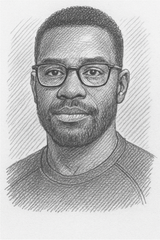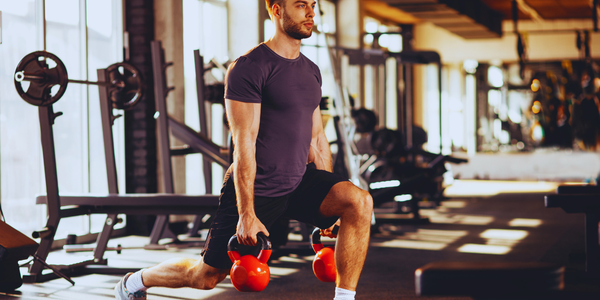Olympic Trainer's 2-Minute Breathing Technique for Faster Recovery
Discover the Olympic-proven recovery breathing technique that helps athletes bounce back faster. Learn this simple 2-minute method to enhance your post-workout Recovery Breathing
https://www.youtube.com/watch?v=m_XCRf9EjNs
Professional athletes can lose up to 30% of their performance because of bad breathing. This is why top trainers now see recovery breathing as key to success.
Recovery breathing is more than deep breathing. It's a smart way to help athletes recover better after hard workouts. It's about using breathwork to speed up muscle and mind recovery.
Olympic trainers have a special 2-minute breathing method. It helps athletes quickly move from intense to relaxed states. This method uses the body's breathing to lessen muscle tiredness and speed up recovery.
This technique uses specific breathing to calm the body down. It makes athletes feel less stressed after working out. This leads to better performance.
Key Takeaways
- Recovery breathing can restore up to 30% of athletic performance potential
- 2-minute breathing techniques help accelerate muscle recovery
- Breathwork triggers the body's natural relaxation mechanisms
- Respiratory therapy can reduce post-exercise stress
- Strategic breathing improves overall athletic performance
Understanding the Science of Recovery Breathing
Breathing is more than just a basic function. It's a powerful tool for reducing stress and helping with recovery after exercise. Athletes and fitness lovers are seeing how mindful breathing can improve both physical and mental health.
Our respiratory system is key in handling stress. Learning about breathing can help us find ways to breathe better and recover faster.
Respiratory Sinus Arrhythmia: A Key to Recovery
Respiratory Sinus Arrhythmia (RSA) links breathing to heart rate. When we breathe in, our heart beats a bit faster. When we breathe out, it slows down. Diaphragmatic breathing can calm the body by activating the vagus nerve.
- Lengthening exhale stimulates parasympathetic response
- Reduces overall physiological stress
- Enhances recovery speed
Nervous System and Breathing Dynamics
Studies show that controlled breathing can affect our nervous system. By using specific breathing methods, we can calm our nervous system. This helps us recover faster and feel less stressed after exercise.
Oxygen Optimization Strategies
Good breathing is key for getting oxygen to our muscles and speeding up recovery. Research finds that certain breathing practices can improve lung function. This is important because our lungs work much harder during exercise.
| Breathing Technique | Benefit |
|---|---|
| Box Breathing | Reduces heart rate, increases CO2 tolerance |
| 4-7-8 Technique | Promotes relaxation, stress reduction |
Professional Athlete's Breathing Training Protocol
Professional athletes use respiratory therapy to boost their performance and recovery. Recovery breathing is key in elite training, helping athletes reach their best. They use special methods to improve their skills.
New breathwork strategies change how athletes train. Studies show 15-25% of athletes have breathing issues. So, focused respiratory training is vital.
- POWERbreathe Inspiratory Muscle Training (IMT): 30 breaths, twice daily
- POWERbreathe Expiratory Muscle Training (EMT): 5 exhales, 5 times per day
- Diaphragmatic breathing for muscle recovery
- Box breathing technique for stress management
Regular breathing exercises help athletes a lot. A 2018 study found diaphragmatic breathing helps athletes relax and manage stress better.
| Breathing Technique | Duration | Performance Impact |
|---|---|---|
| 4-7-8 Breathing | 3-5 minutes | Reduces cortisol, switches nervous system to recovery mode |
| Box Breathing | 3-5 minutes | Improves sleep quality, mental clarity |
| Diaphragmatic Breathing | 5-10 minutes | Increases oxygen efficiency, muscle recovery |
Professional athletes know breathing is more than just getting oxygen. It's a complex way to improve physical and mental performance. By using these advanced techniques, athletes can achieve better recovery and performance.
Conclusion
Recovery breathing is a key technique for athletes wanting to perform at their best. It changes how athletes recover after exercise, making their bodies work better. By using the 2-minute breathing method, athletes can lessen muscle soreness and speed up.
Science shows that breathing right after exercise is crucial. It's not just about resting. Athletes who breathe correctly see their heart rates drop, oxygen levels rise, and their nervous systems calm down faster. This leads to better training and less chance of overtraining.
Learning to breathe for recovery takes time and effort. It's like any skill, needing regular practice and focus. Top athletes know breathing is a powerful tool for improving their bodies. By adding these breathing methods to their training, athletes can get better and stay healthy.
As research grows, recovery breathing is becoming more important for athletes. The future looks bright, with new ways to help athletes reach their limits while staying healthy.
FAQ
What is the Olympic trainer's 2-minute breathing technique?
This technique is a special way to breathe after exercise. It helps athletes calm down fast and use oxygen better. It also speeds up recovery by controlling breathing and relaxing the body.
How does Respiratory Sinus Arrhythmia (RSA) impact athletic recovery?
RSA changes how the heart beats with breathing. It helps athletes relax and recover faster. This reduces inflammation and helps muscles heal quicker after hard workouts.
Can breathing techniques really improve athletic performance?
Yes, they can. Breathing exercises help athletes perform better by controlling the nervous system and improving lung function. They also reduce stress. Top athletes use these methods to recover faster and perform better.
What is the connection between breathing and the nervous system?
Certain breathing patterns can affect the nervous system. They can make athletes more stressed or relaxed. Using the right breathing techniques helps athletes recover faster by relaxing their body.
How often should I practice recovery breathing?
It's important to be consistent. Most athletes do breathing exercises every day, for 5-10 minutes. The Olympic technique is best done 2-3 times a day, after hard workouts or when stressed.
Are breathing techniques only for professional athletes?
No, they're good for anyone. Whether you're an Olympic athlete or just enjoy sports, these techniques can help. They improve stress management, breathing, and recovery for everyone.
What equipment is needed for breathing training?
You don't need special equipment for most breathing techniques. Basic methods can be done anywhere. This makes them easy for anyone to try and improve their breathing.
How quickly can I expect to see results from breathing exercises?
Results can vary, but many see improvements in 2-4 weeks. Consistency and proper technique are key. Regular practice is important for noticeable benefits.
Can breathing techniques help with stress management?
Yes, they're great for reducing stress. By calming the nervous system, they lower stress hormones and promote relaxation. This helps both the mind and body.
Are there different breathing techniques for different sports?
Yes, elite athletes often use sport-specific techniques. Endurance athletes might use different methods than power athletes. Tailoring breathing to the sport helps optimize performance and recovery.
Source Links
- Breathing Exercises for Athletes Using POWERbreathe IMT & EMT
- Breathing Method for Mind, Body and Sport - Oxygen Advantage
- It's not just inspiration – careful breathing can help your health
- This 3-Minute Breathing Exercise Can Help You Recharge After a Workout - The American Institute of Stress
- Breath Tools: A Synthesis of Evidence-Based Breathing Strategies to Enhance Human Running
- Breathing Drills for Athletes - SimpliFaster
- Science of Breath Work: Breathing for Athletes
- Effects of short-term breathing exercises on respiratory recovery in patients with COVID-19: a quasi-experimental study - PubMed
- Effects of short-term breathing exercises on respiratory recovery in patients with COVID-19: a quasi-experimental study
👉 Join the Active Man Community
Get expert tips, workout guides, nutrition hacks, and the latest trends delivered straight to your inbox every week. No spam — just actionable insights to help you live stronger, healthier, and better.





